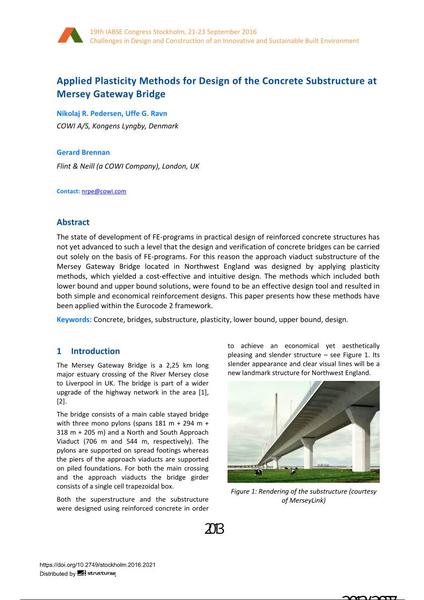Applied Plasticity Methods for Design of the Concrete Substructure at Mersey Gateway Bridge

|
|
|||||||||||
Détails bibliographiques
| Auteur(s): |
Nikolaj Rask Pedersen
(COWI A/S, Kongens Lyngby, Denmark)
Uffe Graaskov Ravn (COWI A/S, Kongens Lyngby, Denmark) Gerard Brennan (Flint & Neill (a COWI Company), London, UK) |
||||
|---|---|---|---|---|---|
| Médium: | papier de conférence | ||||
| Langue(s): | anglais | ||||
| Conférence: | IABSE Congress: Challenges in Design and Construction of an Innovative and Sustainable Built Environment, Stockholm, Sweden, 21-23 September 2016 | ||||
| Publié dans: | IABSE Congress Stockholm, 2016 | ||||
|
|||||
| Page(s): | 2013-2020 | ||||
| Nombre total de pages (du PDF): | 8 | ||||
| Année: | 2016 | ||||
| DOI: | 10.2749/stockholm.2016.2021 | ||||
| Abstrait: |
The state of development of FE-programs in practical design of reinforced concrete structures has not yet advanced to such a level that the design and verification of concrete bridges can be carried out solely on the basis of FE-programs. For this reason the approach viaduct substructure of the Mersey Gateway Bridge located in Northwest England was designed by applying plasticity methods, which yielded a cost-effective and intuitive design. The methods which included both lower bound and upper bound solutions, were found to be an effective design tool and resulted in both simple and economical reinforcement designs. This paper presents how these methods have been applied within the Eurocode 2 framework. |
||||
| Mots-clé: |
design béton ponts piles et culées
|
||||
